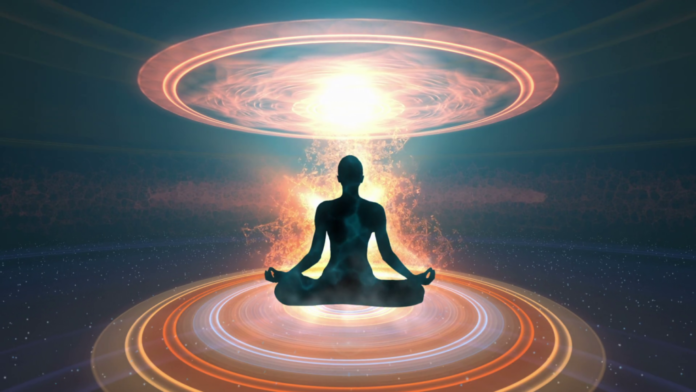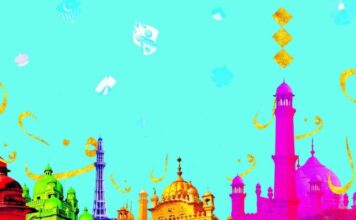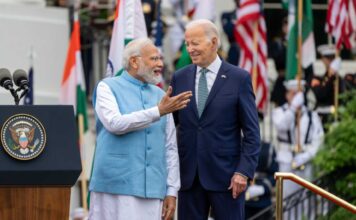By Bal Ram Singh, PhD
The teachers in great Indian traditions are considered virtually Parbrahm (परब्रह्म), the original source of even the Supreme. Thus, finding a learned teacher could be the ticket to greatness for anybody. However, there are prominent examples where disciples excelled beyond their supposed teachers, at times even in conflict with them.
It is believed that one of the teachers of the greatest brahmachari ever born on this earth was Gangaputra Devavrat aka Bhishma Pitamaha of Mahabharat time. First of all, he was the greatest devotee of his mother Ganga and father Shantanu. His mother not only arranged for celestial Brahaspati as Guru for values and knowledge, but also Parasuram as his Dhanurvidya teacher.
Devavrat took a vow to remain only a brahmachari throughout his life and not marry ever. As I have written before, brahmacharya means the state of creative mind through training and learning. The vow was in the context of the question raised by the boatman father of mata Satyavati, who was concerned that once married to Devavrat’s father, Shantanu, his daughter’s progenies will still not get priority over Devrat or his progenies if he were to have children.
With time the incident of Ambalika, the daughter of Kashi Naresh happened, where Ambalika demanded that Bhashma marry her. He refused, citing his brahmacharya vow, and she appealed to his guru, Parasuram, to force him to change his mind. When Bhishma didn’t accept his guru’s diktat, he was challenged to fight with Parshuram that Bhishma compiled successfully keeping his brahmacharya vow intact. Such is the power of brahmacharya!
The other story is that of Vidyottama, the famous princess of Ujjain, who was very bright and had acquired knowledge and its expression both in the form of philosophy and art, at an early age (mentioned as 16 years), had placed a condition along with her father that she would marry someone who could defeat her in a debate. Apparently, several scholars tried but were readily defeated. It seems even her guru , Vararuchi, was also defeated and mocked by Vidyottama, although it is not clear whether the debate was in relation to her marriage or something else. Since it is not clear who was the successor of King Vikramayditya, it is possible that Vidyottama was his only child, thus her marriage may have had more than a bride at stake. Her making the mockery of her guru ultimately resulted in her guru Vararuchi and colleagues eventually succeeded in recruiting a supposedly fool Kalidas to debate and win the debate, and married Vidyottama. Rest is history, as is said.
Dhrishtybduma, the prince of Panchal of Mahabharata time was accepted as the Brahmachari of Guru Dronacharya, despite being widely known that his life’s mission was to take revenge against Dronacharya at the behest of his father Drupad, the King of Panchala, and a classmate of Dronacharya. Such used to be the ethics of teachers on the side of their non-discrimination even at the risk of their lives.
Sadly, no such ethics are common, and the current educational practices, from the grade to graduate higher education levels, including PhD, universally do not reflect much reverence to teachers, and it is more so in India. There is rampant corruption in the education system, where many are involved for money and power, teachers are there to make a living rather than living to make other beings, and administrators – Deans, Provost, Chancellors (all borrowed from church vocabulary) have no concepts of what they are supposed to be. They all act bureaucratically, with little or no grasp of the gravity of their roles, as those are neither innate nor native. These cultures of learning are in quite contrast to the innate nature of the learning environment, anywhere, let alone India where learning is believed to start from the womb!
The mother is the first teacher under whose tutelage sanskaras (working ethics, ordination, or sacrament) germinate in her child, and father exposes the child to the challenges of life, and under whose tutelage they acquire greenery and growth. Under the tutelage of family and friends, these sanskaras flourish, and ultimately they get seeded with the help of the teacher or guru.
Under those traditional systems, the family and the schools work in tandem for the brahmacharya to begin and mature with her/his traits and values. Under the current system, families and parents are distanced, and brahmacharya is replaced with a bookish and rote system for success in getting a job, initiating a business, or occasionally opening a startup.
Under the very best circumstances, the system creates a track for one to acquire skills of success in the world, and in more common circumstances, one finds a way to survive, and that gets a nod of evolution by declaring them as the example of the survival of the fittest!
A systematic overhaul is warranted to Brahmacharis to learn by themselves, until we find teachers of higher standing capable of seeding them in creativity. 
Balram Singh is a Professor and the President of the Institute of Advanced Sciences, Dartmouth, Massachusetts, researching Ayurveda, Yoga, Vedic education, and Vedic social and political traditions. He is also an adjunct faculty at Jawaharlal Nehru University (JNU), New Delhi.













